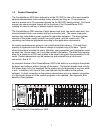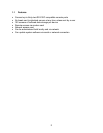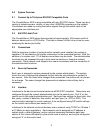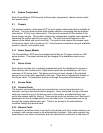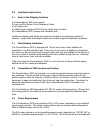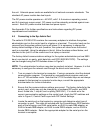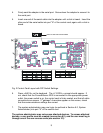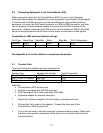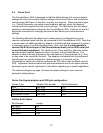3
2.0 System Overview
2.1 Connect Up to Thirty-two RS-232C Compatible Ports
The ConsoleServer 3200 is plug-compatible with any RS-232C device. These may be a
variety of network servers, routers, or any other LAN/WAN computers on the network.
Connections are made by routing the device signals through the switch cards to the
appropriate user interface port.
2.2 64K FIFO Audit Trail
The ConsoleServer 3200 stores the equivalent of approximately 100 screens worth of
data per device port in a FIFO buffer. This data is viewed 'off-line' at any time by users
accessing the device port buffer.
2.3 Connections
With the maximum number of terminal and/or network cards installed, the system is
capable of 16 simultaneous full-duplex connections to the connected devices. With the
addition of a modem card, 17 full-duplex connections may be made. The administration
functions may be accessed through a local serial connection or through a network
connection. Each network card supports four users connections and one connection to
the administration functions.
2.4 Security Passwords
Each user is assigned a unique password by the system administrator. The system
forces the user to change the password the first time the user attempts to connect to
any servers. After the users have changed their passwords, the system will not prompt
for a change. The users change their passwords at whatever interval they feel is
necessary.
2.5 Interface
Interfaces to the device and terminal cards are all RS-232C compliant. These ports are
configured through the system administration port on the control card. Port 'A' on the
control card is the system administration port. Each port has settings for baud rate, stop
bits, parity, number of data bits, flow control, and port type (i.e., DTE or DCE). The
communication settings for control card port A are configured using DIP switch settings
on the control card surface (see section 4.5).
Interfaces to the network card must be done over a network using TCP/IP on 10-base T
at 10 Mbits (no auto-negotiation). Each network card is assigned an IP address, a
subnet mask, a default gateway, and an optional secondary destination path (see
section 6.5 for more information) by the control card at start-up, and may be configured
using port ‘A’ on the control card.







